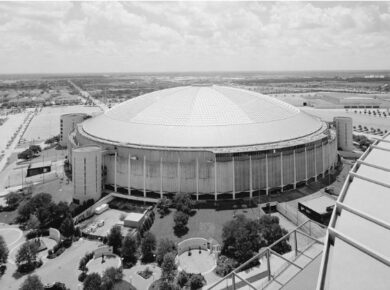Opening of the Iron Bridge on 1 January 1781.
The Iron Bridge is a cast iron arch bridge that crosses the River Severn in Shropshire, England. Opened in 1781, it was the first major bridge in the world to be made of cast iron. Its success inspired the widespread use of cast iron as a structural material, and today the bridge is celebrated as a symbol of the Industrial Revolution.
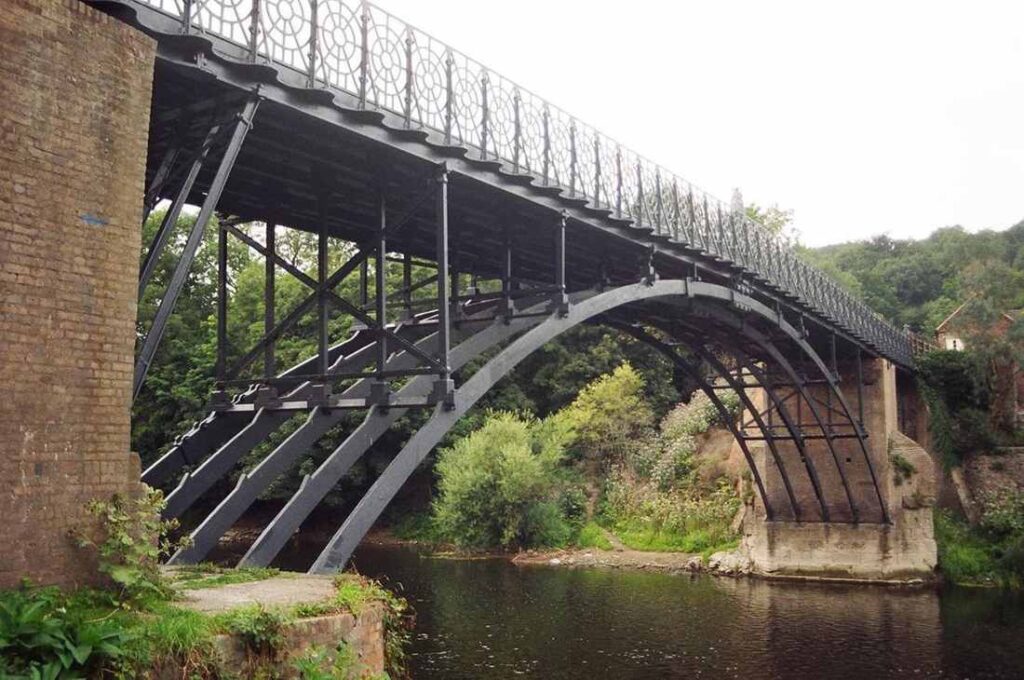
Photo: Peterlewis
To cope with the instability of the banks and the need to maintain a navigable channel in the river, a single span iron bridge was proposed by Thomas Farnolls Pritchard. The bridge is built from five sectional cast-iron ribs that give a span of 30.6 m.
The construction of the bridge used 378 long tons of iron, and there are almost 1,700 individual components, the heaviest weighing 5 long tons. Components were cast individually to fit with each other, rather than being of standard sizes, with discrepancies of up to several cm between ‘identical’ components in different locations.
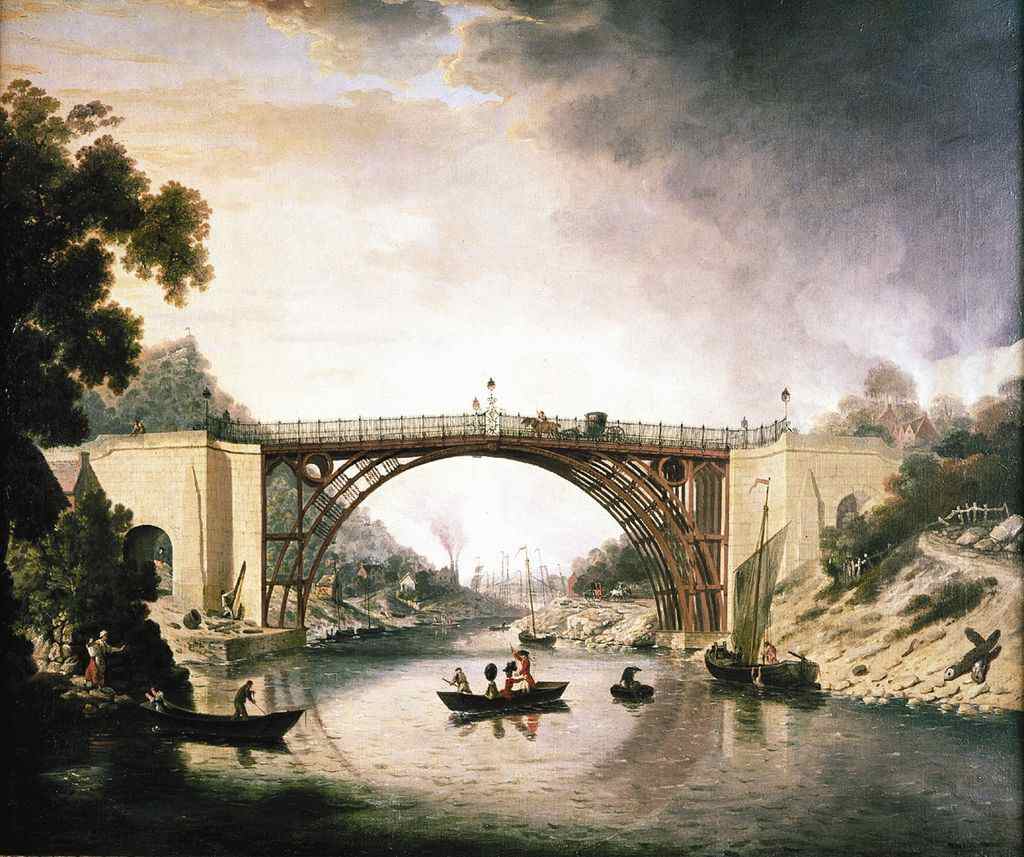
Photo: comestepbackintime
In 1997, a watercolour by Elias Martin was discovered in a Stockholm museum, which showed the bridge under construction in 1779. The painting shows a moveable wooden scaffold consisting of derrick poles standing in the river bed being used as a crane to position the half-ribs of the bridge, which had been taken to the site by boat from Darby’s foundry 500 m downstream.
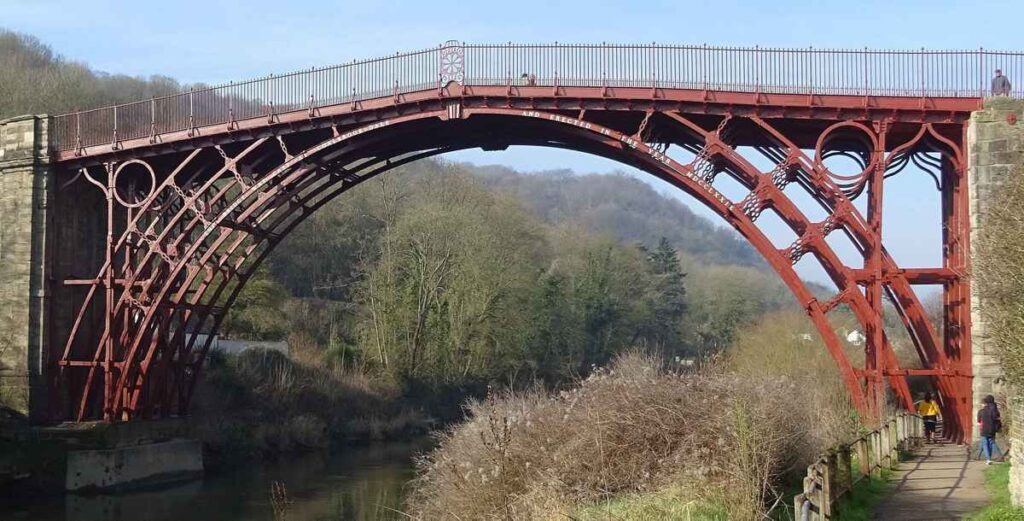
Photo: Tk420
After being in a poor state of repair for much of its life, extensive restoration works in the latter half of the 20th century have protected the bridge.
The Iron Bridge is made of cast iron. This is immensely strong in compression, but performs less well than steel and wrought iron when subjected to tension or bending moments, because of its brittleness and lower tensile strength.

Photo: © User:Colin / Wikimedia Commons / CC BY-SA 4.0
Puddled wrought iron was a much better structural material than cast iron but not widely available until after 1800, eventually becoming the preferred material for bridges, rails, ships and buildings until new steel making processes such as the Bessemer process were developed in the late 19th century.
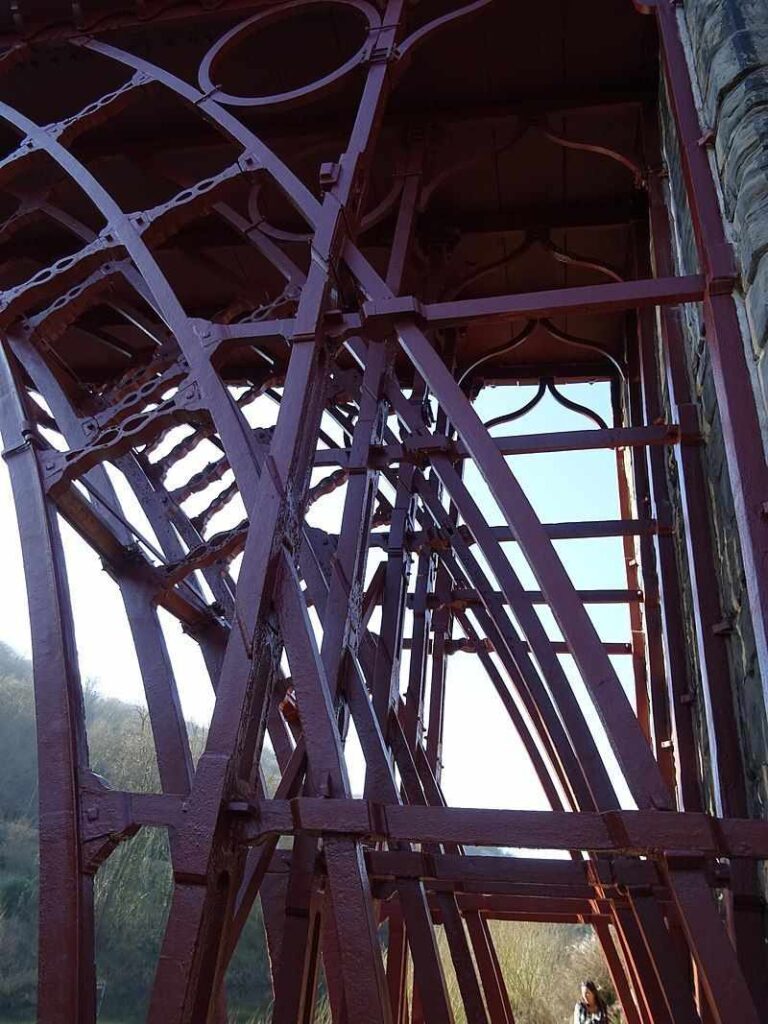
Photo: Tk420
About the Author:

Bruno Dursin – Managing Director at Believe in Steel. Bruno has more than 30 years of experience in promoting steel & steel solutions. His clients benefit from his extensive network within the building industry.



